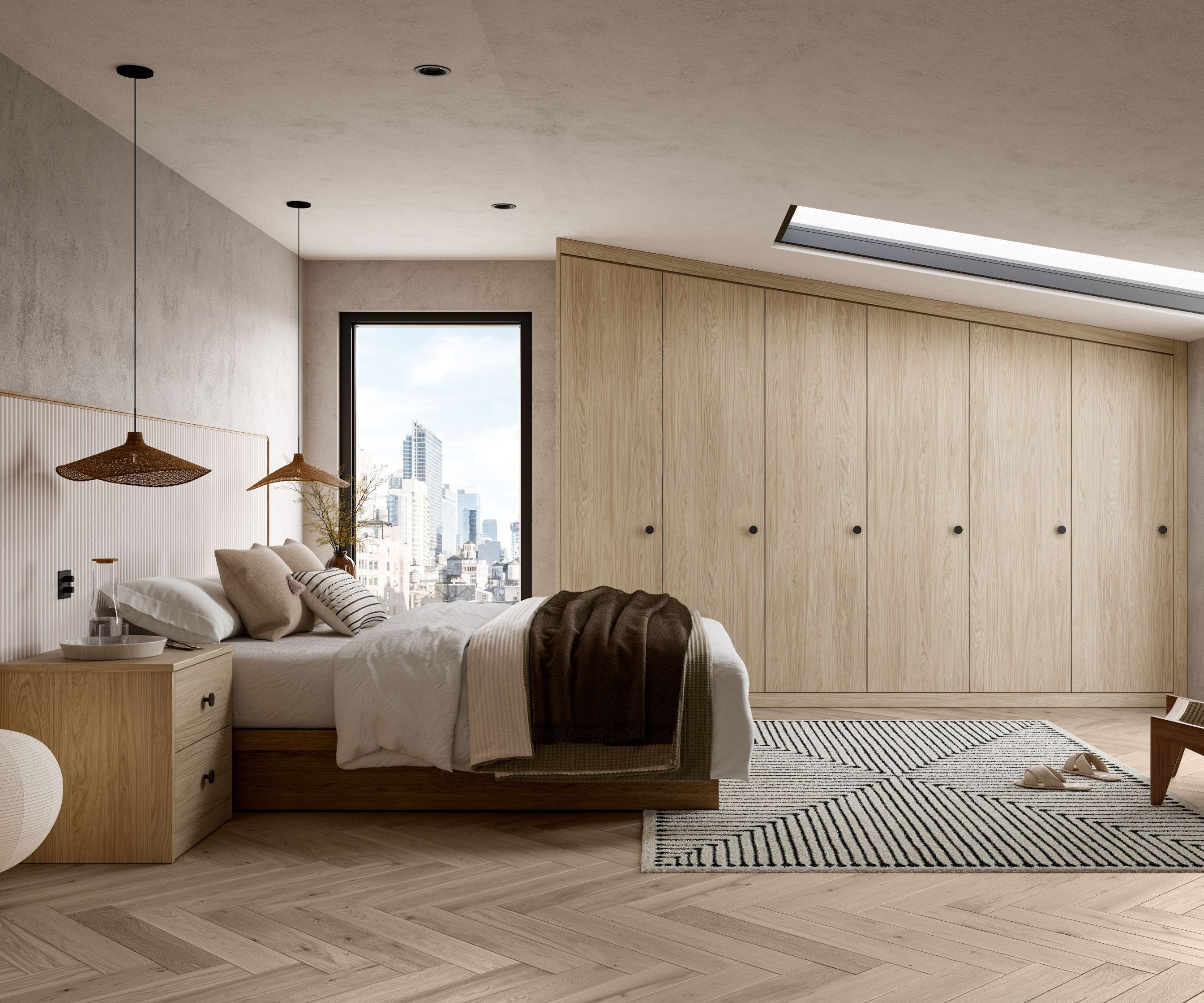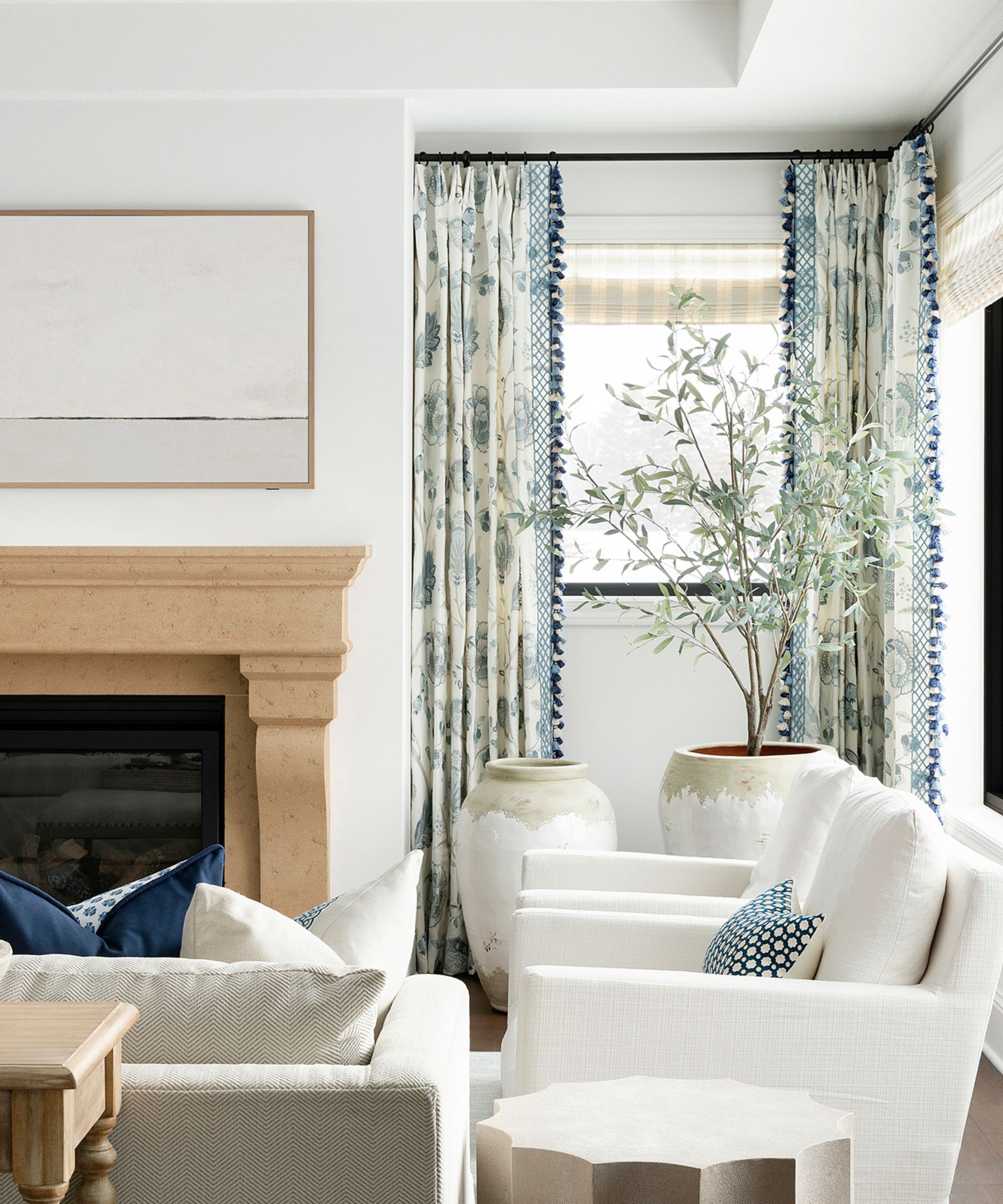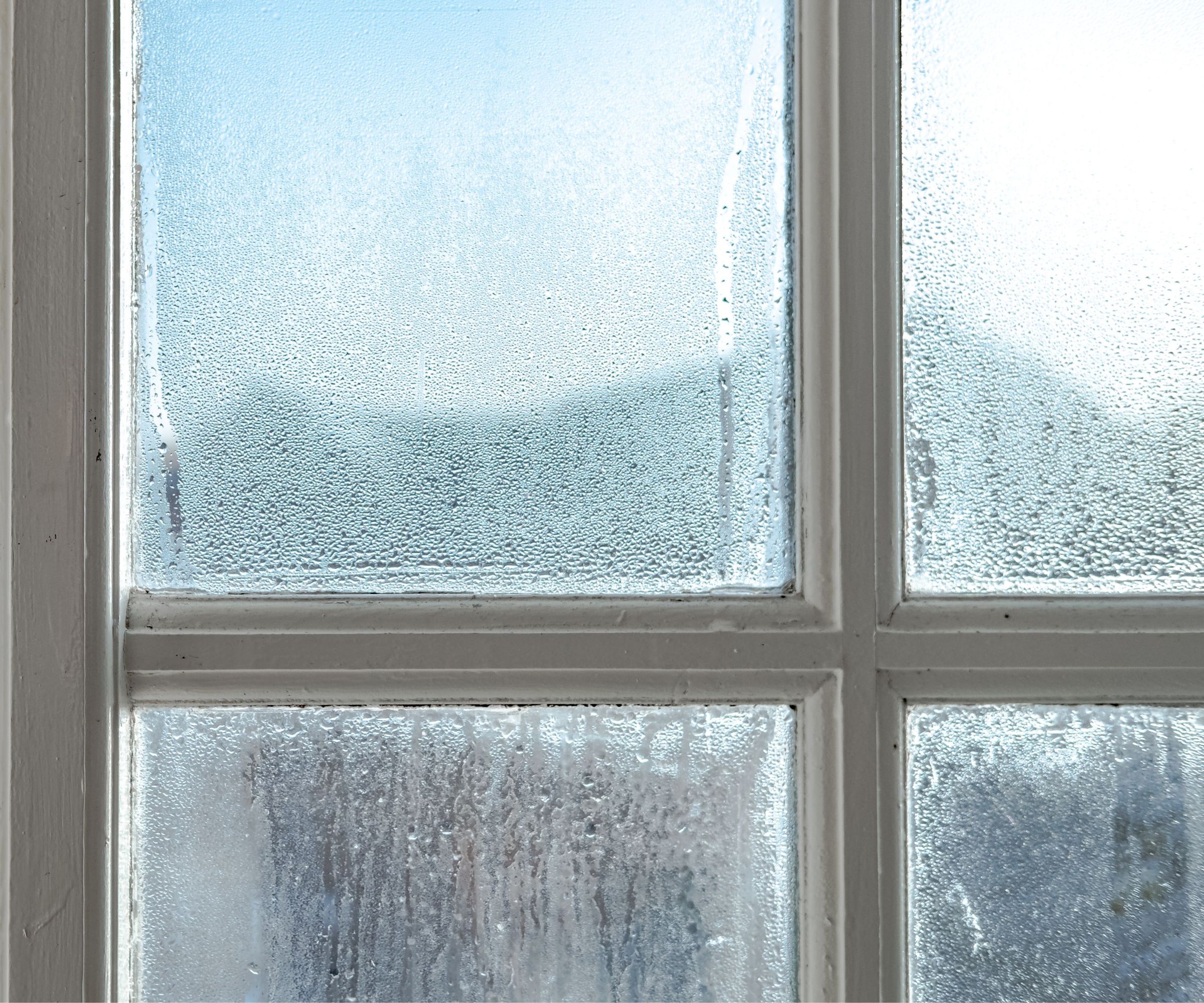How to stop condensation on windows overnight – 5 expert-recommended steps
Adopt a multifaceted approach to stopping condensation on windows with these five hacks, creating a healthier living environment


Condensation forming on windows overnight can have several issues, including damaging your home, from mold and mildew growth to water damage on your window frames and sills, and can become a health risk. However, there are many things you can do to stop condensation on windows overnight.
With winter approaching, condensation is becoming more of a problem for homeowners, making this the ideal time to get rid of condensation by implementing these preventative measures to create a healthier living space.
While many traditional solutions are not aesthetically pleasing, our experts have explained six tips for stopping condensation on windows overnight without compromising aesthetics or functionality.
How to stop condensation on windows overnight
When looking for solutions, it's crucial to understand the underlying causes of window condensation. This forms when there is a temperature and humidity difference between indoor and outdoor air, meaning the moisture in the warm and more humid indoor air condenses on the cold surface of the window.
Condensation inside windows can be bad if left unchecked, leading to mold and possibly damaging your window seals.
1. Increase ventilation

'One of the most effective ways to tackle condensation is by improving airflow,' explains Mohammed Ahmed, founder of The Home Guidance. 'Regularly opening windows during daytime allows moist air to exit, and fresh, dry air to circulate.
'Moreover, rooms that are naturally high in moisture, like bathrooms and kitchens, can benefit from exhaust fans. Ensure that these fans vent to the outdoors and not into areas like attics or crawl spaces.'
If you would prefer not to open your windows frequently and don't have an exhaust fan, using a standing fan to circulate air into a room from elsewhere in your home can also help improve airflow. A window fan can help to circulate air, removing moisture from the air near your windows.
Opt for a reversible fan, so that you can run it in reverse during the winter to help prevent condensation. We recommend this Dreo Tower fan, from Amazon.
Finally, open blinds and curtains during the day. 'This allows air to circulate freely and reduces the chance of moisture settling on the windows,' explains Michael Golubev, CEO of Mold Busters.

Mohammad Ahmed is an Interior Designer and Home Expert. He did his bachelor's degree in Interior design at the University of Minnesota in 2013 and since then has worked as an interior designer in various companies, designing functional and beautiful spaces for clients. In addition to his interior and exterior design skills, Mohammad is also a Home expert with a talent for creating bespoke furniture and other accessories. He has been featured in popular publications such as Forbes, Yahoo, Realtor, Real Homes, Bustle, and Living Etc. for his exceptional design tips.
2. Maintain a stable indoor temperature

'Keeping your home at a consistent temperature can prevent warm air from meeting cold surfaces, which is a primary cause of condensation,' says Michael Golubev.
To maintain a stable indoor temperature, take measures to keep heat in rooms, including closing curtains and shutting doors to keep heat in.
'Using thermal or insulated curtains can help retain indoor heat during winter, reducing the cold air's impact on the window's inner surface,' adds Mohammed Ahmed.
'Additionally, sealing gaps around windows and doors with draft excluders or weather-stripping can further stabilize the indoor environment.' Sealing gaps in windows can prevent moisture-laden air from coming in, preventing condensation.
Depending on your window type and color, you might opt for this weather-stripping for windows, from Amazon. We recommend choosing weather stripping that blends with your windows.
These methods can keep your house warm without turning up the heat to reduce condensation.
3. Dehumidify the air

Condensation on windows overnight is mainly due to the high humidity in your home. As a result, one of the most effective solutions to reduce condensation is by managing humidity levels inside your house.
'Areas with consistently high humidity, such as bathrooms and near windows, might require dehumidifiers,' recommends Mohammed Ahmed. 'These devices extract excess moisture from the air.
'For those looking for a comprehensive solution, whole-home dehumidification systems can be considered.' Use a dehumidifier to keep humidity at 45-55%.
If you're in the market for a dehumidifier, you can check out our guide for the best dehumidifiers.
For a more affordable, though less effective way to reduce your home's humidity, incorporate moisture-absorbing materials such as silica gel packs or desiccants concealed near windows to minimize excess humidity. We recommend this reusable desiccant dehumidifier, from Walmart. You may also want to invest in a window vacuum miracle product to curb condensation, which will also help to avoid damp, mold and mildew in your home.
4. Improve window insulation

'A well-insulated home can significantly deter condensation,' explains Mohammed Ahmed. 'Ensuring adequate insulation in areas like the attic and walls can lessen the temperature disparity between the inside and outside.'
'Windows with double or triple glazing serve as an insulating barrier between a room's interior and the external environment, helping to reduce condensation by keeping the inner pane warmer, preventing moisture from settling.
'This insulation minimizes the risk of condensation forming on the inside pane. Such windows are also energy-efficient and aid in noise reduction.'
Additionally, applying window film can help to insulate windows and reduce heat loss, minimizing condensation.
Window film is a thin layer of material that can be applied to the inside of your windows. This is a seasonal but effective measure that traps a layer of air between the glass and the film, offering an extra layer of insulation.
You can find heat control window film at Amazon.
'For a more permanent solution, consider investing in energy-efficient windows equipped with low-emissivity (Low-E) coatings,' recommends Elizabeth Grace, home expert and founder of Dream Home Making. 'These specialized coatings minimize heat transfer, thereby reducing the likelihood of condensation formation on the window surface.' This eco-home improvement is a great long-term solution for reducing condensation.
Blinds and curtains can also help to insulate your windows. At night, close curtains or blinds to create a protective barrier between the window glass and the warm indoor air, helping to prevent condensation.
5. Use plants that banish condensation

Some houseplants can banish condensation, such as a snake plant, Boston fern, or peace lily, absorb moisture from the air, and regulate humidity.
Place these plants strategically in problem areas, such as near windows where condensation is prevalent, to help absorb excess moisture from the air.
However, some indoor plants release significant moisture that can increase condensation, so be sure to only choose less water-intensive plants, otherwise using plants to reduce condensation could be counterproductive.
'Overwatering your plants can also lead to excessive transpiration, which increases indoor humidity,' warns Elizabeth Shields, from Super Cleaning Service Louisville. 'To prevent window condensation, it's important to find the right watering routine for your leafy friends.
'Research and be attentive to the specific requirements of your indoor plants.'
FAQs
Which window dressings should you use if you have condensation?
If you have condensation, this can damage your window dressings, so choose blinds or curtains that are made from a moisture-resistant material, such as faux wood or vinyl.
Additionally, consider using insulating window treatments such as thermal curtains or blinds, to create a barrier that lessens temperature differentials between in and outside, and limits condensation build-up.
What indoor appliances could be causing condensation?
Since condensation on windows occurs overnight due to differences in temperature and humidity inside and outside, reducing the sources of heat and humidity overnight inside can reduce this issue. For example, ensuring after a shower in the evening you run the bathroom fan and wipe down wet surfaces.
'Another way to reduce humidity in the air at night is to wait to run the dishwasher until the morning hours. Many modern dishwashers have a delayed start setting. You can use that to delay the start until morning when the outside temperatures start to warm up,' advises Brian Benham, owner of Benham Design Concepts. 'Any steam-producing thing you can reduce or do earlier in the day will help reduce condensation at night.'
To combat condensation effectively, it's important to adopt a multifaceted approach. Start by ensuring adequate ventilation, allowing the moist air to escape. Prevent the accumulation of condensation around the windows by maintaining a consistent temperature and incorporating moisture-absorbing materials near the affected areas to minimize excess humidity.
For a daily way to remove condensation from windows without soaking towels or wiping moisture onto your windowsills, you can use a window vac to beat condensation. We've also tried the dish soap window condensation hack and found it can keep moisture from building up on windows for around a week.
If you've spotted condensation on the outside of your windows, if may be a sign your insulation isn't working well for your home anymore if the droplets don't clear as the temperature rises naturally over the course of the day.
Karcher WV 1 Plus Window Vacuum Squeegee | Was $79.99, now $44.99
My window vacuum/squeegee won't just help you vacuum away condensation, it can also be used to clean windows, eliminating streaks speedily.
Sign up to the Homes & Gardens newsletter
Design expertise in your inbox – from inspiring decorating ideas and beautiful celebrity homes to practical gardening advice and shopping round-ups.

Lola Houlton is a news writer for Homes & Gardens. She has been writing content for Future PLC for the past six years, in particular Homes & Gardens, Real Homes and GardeningEtc. She writes on a broad range of subjects, including practical household advice, recipe articles, and product reviews, working closely with experts in their fields to cover everything from heating to home organization through to house plants. Lola is a graduate, who completed her degree in Psychology at the University of Sussex. She has also spent some time working at the BBC.
-
 Ina Garten's storage pantry is an insightful window into all of the best cookware used by the chef – and it's easy to recreate on your kitchen shelves from $48
Ina Garten's storage pantry is an insightful window into all of the best cookware used by the chef – and it's easy to recreate on your kitchen shelves from $48The beautiful dishware in The Barefoot Contessa's Hamptons pantry showcases the tools she uses most often to cook – this is exactly how you replicate it
By Sophie Edwards Published
-
 Extend the lifespan of your appliance with 5 simple but crucial washing machine maintenance tips
Extend the lifespan of your appliance with 5 simple but crucial washing machine maintenance tipsFrom cleaning the filters to keeping the door open, experts reveal the washer tips they swear by
By Andy van Terheyden Published
